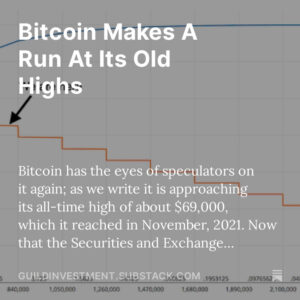The Currency War Is On — What Does It Mean For Your Portfolio?
Many world currencies are being devalued, and it is the beginning of a potential currency war. This, more than any other current or historical event, gives us a direction for the future of investing and shows us a few areas of highly likely profit for years to come.
As we point out below, the dominant world financial event of recent months is the collapse of most financial authorities’ willingness to let their currencies rise significantly — or indeed at all.
Why? Because economic growth is too slow, current money-pumping activities aren’t causing economic activity to grow fast enough, and exports are slowing. For all of these reasons, numerous countries around the globe are devaluing their currencies, and compliant central banks are lowering interest rates and expanding their bond-buying (and in some cases, stock-buying) programs.
Why is this occurring? Primarily, because many developed-world economies have spent decades creating slow-growth and no-growth policies: high taxes and heavy bureaucracies that discourage innovation, growth, and new business formation. With organic growth suppressed by taxation and bureaucracy, politicians then resort to covert vote-buying through promised public spending.
Eventually the Government Steps In
However, politicians ultimately cannot give the promised handouts, because growth is not fast enough to increase tax revenues sufficiently.
Governments begin by lowering interest rates, which in itself can be benign. However, if desirable results are not quickly forthcoming, governments revert to devaluing their currency, hoping to improve exports. Central banks may also buy bonds and even stocks in order to create a wealth effect — hoping that positive psychology will induce consumers to spend and companies to expand operations, add jobs, and grow the economy. What these countries fail to understand is that if the anti-business rhetoric is strong enough and the bureaucracy is complex enough, companies will vote with their feet and leave the country to start a business elsewhere.
If panic to lower the currency more and more continues, disorderly and volatile markets ensue. The final result of this is a global disinflation, where panic over the devaluation of currencies causes investors to seek other avenues to hold wealth. Wealth leaves banks and the banking system, and no one wants to hold cash. Instead, wealth lodges itself in any income-earning asset that investors perceive to be secure.
Here are four examples of secure areas where people go when governments act irrationally:
1. Quality Bonds. Sovereign debt issued by strong governments, or bonds of big companies with strong balance sheets and a very stable business.
2. The U.S. Dollar. Cash moves from many other currencies into those currencies which remain strong, and which will be allowed to rise in value in spite of the negative impact that may have on their exports. Currently, the U.S. Dollar is the strongest global currency, and the U.S. authorities are tolerating its appreciation.
3. U.S. stocks denominated in the U.S. Dollar: the currency which everyone knows will be the world’s strongest. Investors will buy the stocks of quality U.S. companies that pay good dividends. These high-quality companies attract foreign investment for a combination of a strong currency and a good yield. (Some examples include companies such as AT&T [NYSE: T], Cisco [NASDAQ: CSCO], Apple [NASDAQ: AAPL], Schlumberger [NYSE: SLB], the preferred stocks of some U.S. blue-chip companies, and other big-yielding U.S. blue chips. Note: GIM owns T, CSCO, AAPL, and SLB for some clients. We are not recommending these stocks for purchase at this time.)
4. Gold. Gold is itself recognized as a kind of currency which has held its value through many inflations and deflations in the past.
Thus far this year, gold, U.S. Treasury bonds, and the U.S. Dollar index (versus a basket of other currencies including the Euro, Swiss Franc, Japanese Yen, British Pound, Canadian Dollar, and Swedish Krona) have all outperformed the S&P 500:
These are the main trends that we can see for the next few months (and possibly years) as this competitive currency devaluation game plays itself out.
All four instruments have risen in value this year, and we believe that they will continue to rise. As long as the U.S. government tolerates the pressure that a rising dollar puts on the income and thus tax paying ability of its corporate citizens.
Additional Opportunities
Here are some other more short-term and could provide profits in spite of the global currency devaluation:
• QE in Europe may provide an opportunity to own European blue chips if you hedge the currency, and if you can tolerate the volatility that Greece and Russia will surely create.
• There may be opportunities in India, China and other countries that expand their money printing and successfully heat up their economies to try to grow faster. Not all will succeed; local conditions and specific characteristics of these economies will determine whether additional easing has substantive effects on growth and on stock prices.
These markets could be good investments, but only if you hedge the currencies, because they will almost certainly depreciate versus the U.S. Dollar.
Investment implications: In an emerging negative interest rate environment, characterized by near-universal central bank easing “by any means necessary,” quality bonds, the U.S. Dollar, gold, and the stocks of big-cap, reliable dividend-yielding blue-chip stocks should do well.








